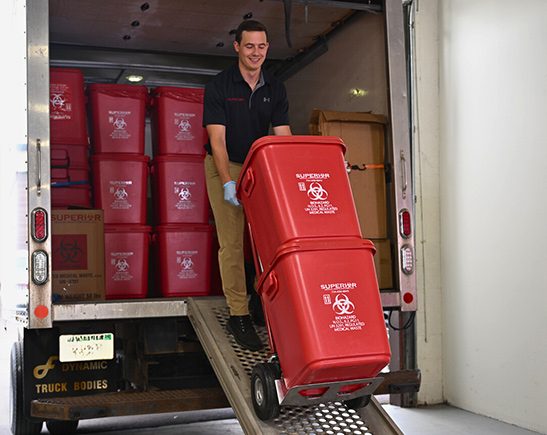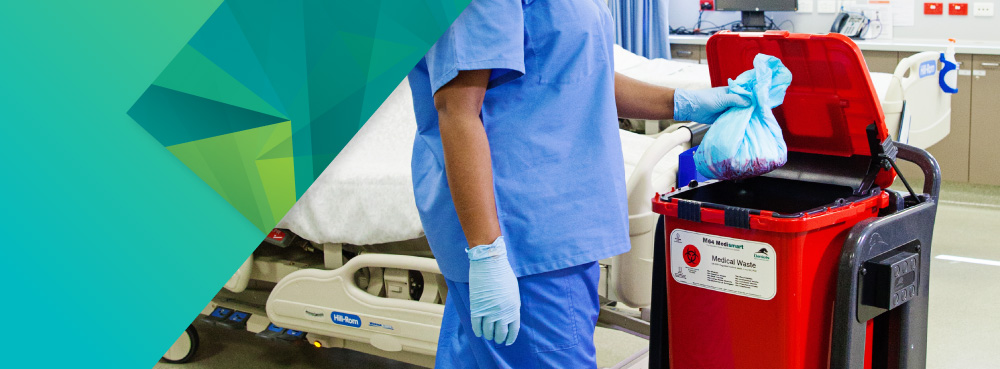Security First: Your Guide to Accountable Medical Waste Removal Services
Minimize Prices and Maximize Safety: Effective Medical Waste Disposal Strategies
Effective clinical garbage disposal methods are vital for medical care facilities to maximize and minimize prices security. With the growing issue for environmental sustainability and the raising variety of policies bordering waste monitoring, it is critical for medical care organizations to adopt reliable and certified methods. By executing correct partition and categorization, reliable packaging and labeling, safe transport and handling, effective therapy and disposal methods, and conformity with regulative standards, health care centers can make sure the responsible and secure administration of clinical waste. In this discussion, we will certainly explore each of these approaches carefully, providing insights and sensible ideas for medical care experts to maximize their waste disposal procedures.

Correct Segregation and Categorization
Proper segregation and categorization are critical elements of effective medical garbage disposal approaches, ensuring the safety of health care workers, the public, and the atmosphere - medical waste removal near me. medical waste disposal services with WasteX. By dividing various types of clinical waste at the factor of generation, health care facilities can minimize the threat of cross-contamination and prospective harm to people and environments
Among the essential factors in appropriate segregation is the recognition and classification of clinical waste. This involves classifying waste into various groups, such as transmittable, harmful, radioactive, or pharmaceutical waste. Each group requires particular handling, storage space, and disposal techniques to stop any type of adverse impacts on human health and the atmosphere.
Furthermore, appropriate partition also consists of making use of color-coded containers and tags to clearly recognize and differentiate the different kinds of medical waste. This assists medical care workers and waste monitoring personnel to quickly acknowledge and take care of the waste properly. Red containers may be utilized for transmittable waste, while yellow containers may be assigned for harmful waste.
Along with segregation, proper classification additionally entails the appropriate packaging and control of clinical waste. This ensures that waste is securely kept and delivered without posing any risks to individuals or the atmosphere. Making use of puncture-resistant and watertight containers, along with properly sealing and labeling them, helps to stop any type of unexpected direct exposure or launch of harmful substances.
Efficient Packaging and Labeling
Efficient packaging and labeling play a crucial function in guaranteeing the effective and safe disposal of medical waste. Proper product packaging is essential to prevent leak, damage, or splilling during transportation and handling. It helps to minimize the threat of contamination and secures health care workers, waste management personnel, and the setting from possible dangers.
Medical waste ought to be packaged in tough and watertight containers that are immune to penetrate and breakage. These containers should be properly secured to stop any type of leakage. In addition, the product packaging ought to be able to hold up against the conditions of transportation, consisting of temperature variants and harsh handling.
Labeling is just as crucial as it offers crucial details regarding the materials of the waste and any type of potential threats connected with it. The tags should include the name of the medical care facility, the kind of waste, and any unique handling directions. Standardized and clear labeling makes certain that waste administration employees can quickly determine and handle the waste properly.
Reliable packaging and labeling additionally aid in the appropriate partition and categorization of clinical waste. Clear labeling permits simple recognition of different waste streams, such as transmittable waste, sharps, or pharmaceutical waste. This helps in enhancing the disposal procedure and guaranteeing that the waste is dealt with or dealt with based on governing guidelines.
Safe Transportation and Handling
Making certain the safe transportation and handling of clinical waste is of utmost importance in order to avoid any kind of possible health and environmental dangers. Clinical waste, such as sharps, contaminated materials, and pharmaceutical waste, should be appropriately packaged and handled to reduce the danger of direct exposure to unsafe substances and pathogens.
Delivering clinical waste calls for conformity with strict policies and guidelines set by regional authorities and ecological companies. These laws intend to protect the health and wellness of workers associated with waste management and avoid the release of dangerous materials into the environment.
To ensure safe transportation, clinical waste needs to be positioned in puncture-resistant and watertight containers that are appropriately secured medical waste disposal services with WasteX and identified. These containers ought to be protected in such a way that avoids spills or breakage during transportation (medical waste removal service). Additionally, it is essential to use customized lorries furnished with proper security features to transport clinical waste. These automobiles ought to have adequate air flow and be created to stop leakage or contamination.
Dealing with clinical waste additionally requires appropriate training and adherence to security methods. Personnel included in the handling of clinical waste need to put on appropriate personal protective devices (PPE) such as masks, gowns, and gloves to decrease the risk of exposure. They should likewise comply with stringent health methods to avoid the spread of infections and make sure the risk-free disposal of waste.
Reliable Therapy and Disposal Approaches
Applying ideal therapy and disposal approaches is crucial in managing medical waste effectively and minimizing potential health and ecological threats. Clinical waste, which consists of sharps, transmittable products, chemicals, and pharmaceuticals, can position significant hazards if not my review here taken care of and disposed of properly. There are numerous therapy and disposal techniques offered that comply with regulatory standards and advertise safe practices.
One usual method is incineration, which involves burning the waste at heats. Incineration is efficient in ruining microorganisms and minimizing the quantity of waste, however it can launch dangerous toxins right into the air otherwise effectively regulated. Consequently, it is vital to make use of modern-day burners furnished with discharge control innovations.
An look at this now additional technique is autoclaving, which utilizes steam and pressure to decontaminate the waste. Autoclaving works in eliminating microorganisms and reducing the quantity of waste, yet it needs careful monitoring and upkeep to make sure appropriate functioning. The decontaminated waste can after that be safely dealt with in a land fill.
Chemical therapy is another alternative, which entails utilizing disinfectants or various other chemicals to neutralize virus. This technique is typically made use of for liquid waste, such as laboratory samplings. Nevertheless, it is essential to make use of suitable chemicals and adhere to appropriate procedures to make sure effective therapy and avoid ecological contamination.

Compliance With Regulatory Standards
Following regulative guidelines is vital in ensuring appropriate conformity with medical garbage disposal techniques. These guidelines are established to safeguard public wellness, prevent environmental contamination, and keep workplace security. Conformity with governing guidelines is important for medical care facilities, as non-compliance can lead to charges, penalties, and reputational damages.
Regulatory guidelines detail the correct handling, storage, transportation, and disposal of medical waste. They supply details instructions on packaging demands, labeling, and record-keeping. These standards additionally resolve the segregation of different waste streams, such as sharps, infectious waste, and pharmaceutical waste. Health care facilities need to make certain that their waste administration techniques straighten with these standards to minimize the risk of direct exposure to unsafe products and prevent the spread of infections.
To keep conformity, health care facilities ought to establish extensive waste management programs that include team training, normal audits, and recurring tracking. It is necessary to maintain updated with any changes or updates to governing standards, as methods may advance with time. By remaining notified and implementing proper methods, health care facilities can reduce the possibility for regulative violations and protect the health and wellness of their staff, patients, and the bordering neighborhood.
Conclusion
In verdict, carrying out effective clinical waste disposal strategies is critical for lessening costs and maximizing safety and security. Appropriate partition and categorization, reliable packaging and labeling, secure transportation and handling, and reliable treatment and disposal techniques are important actions to guarantee conformity with regulatory guidelines. medical waste removal. By sticking to these approaches, health care centers can protect the atmosphere and public wellness while likewise lowering financial problems related to medical waste administration
By applying proper segregation and classification, reliable packaging and labeling, risk-free transport and handling, reliable treatment and disposal techniques, and conformity with governing standards, healthcare facilities can make sure the secure and responsible administration of clinical waste. Red containers might be used for infectious waste, while yellow containers may be assigned for harmful waste.
Clear and standard labeling ensures that waste monitoring employees can easily identify and deal with the waste suitably. (medical waste disposal services with WasteX)
Clear labeling enables for very easy identification of different waste streams, such as infectious waste, sharps, or pharmaceutical waste. These standards likewise deal with the segregation of various waste streams, such as sharps, contagious waste, and pharmaceutical waste.